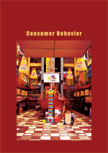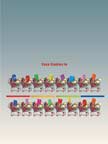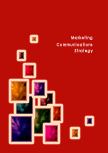Consumers Behavior
 |
Details
Chapter Code: CBC15
Textbook:
210 X 275 mm approx.
Short Case Studies
Detail Table of Contents
Workbook:
Pages : 304; Paperback;
210 X 275 mm approx
Pricing
Textbook Price: Rs. 750;
Workbook Price: Rs. 700;
Shipping & Handling Charges: Rs. 50 per book;
Books Available only in INDIA
Chapter Price : Rs. 100
To download this chapter in electronic format, click on the button below,
and select the chapter from the list of available chapters.
Buy Now
To order the entire book click on the button below, and select the book from
the list of available books:
Please allow 5 to 10 days for delivery of the
Book.
Consumer Behavior : Chapter 15
SUMMARY:
Post-purchase behavior involves all the consumers' activities and the experiences that follow the purchase. Usually, after making a purchase, consumers experience post-purchase dissonance. In other words, they regret their purchase decision. The reasons for high post-purchase dissonance can be attractiveness and performance of forgone alternatives, difficult purchase decision, large number of alternatives, etc. |
|
Marketers, therefore, can use these opportunities to reduce consumers' risk perception by way of good return/exchange policies and reduce their post-purchase dissonance by messages targeted at this segment of their consumers.
Consumers' retail store selection behavior depends on - store image Despite post-purchase dissonance, many consumers proceed with consumption of the product. How consumers use the products is an important knowledge source for marketers, as they can offer better products and reach more consumers based on these consumer usage patterns.
In some cases, however, consumers initially use the product but after a period of time fail to do so. Marketers, therefore, should not consider a product purchased as a product consumed. A non-used product is also more likely to affect the repurchase pattern of the consumers negatively. Consumers need to dispose off the products or packaging before, during, or after the use. The issue of disposal is gaining considerable importance for marketers as it directly affects the repurchase pattern of the consumers.
As more and more products are consumed and disposed off, it is likely that repurchase will also be more. Many a time, consumers cannot repurchase without disposing off the product first, due to space and financial constraints. Thus, many marketers, especially retailers, are helping consumers to dispose off their old products. This not only gives consumers a reason to repurchase but also increases marketers' sales. The disposal options the consumers have are
- keep the product, temporarily dispose off, or permanently dispose off.
Product use/consumption is followed by its evaluation, which may then lead to satisfaction (perceived performance > minimum desired expectations); non-satisfaction (perceived performance = minimum desired expectations); or dissatisfaction (perceived performance < minimum desired expectations). Consumer dissatisfaction may result in complaint behavior. Consumers may choose to take action against the marketer/service provider by way of warning friends, returning the product, boycotting and brand switching, complaining to the marketer, complaining to the relevant government/non-government bodies, and/or taking legal action against marketers/service provider.
Marketers should try to use consumer complaints as a way of assessing their performance as perceived by their consumers and should use this opportunity to delight them by showing their commitment to consumer service. Many marketers are actively seeking consumer feedback to improve their products and service quality with a view to retaining their existing consumers and attracting new ones. They have identified consumer retention as a major concern, as research has shown that even satisfied consumers can't be termed as loyalists and often switch to competing brands to get a better deal.
Marketers thus, have identified the quality of product and service as the parameter to evaluate consumers' intention to repurchase instead of their level of satisfaction. Only totally satisfied and committed consumers are recognized as brand loyalists. Brand loyal consumers not only spread positive word-of-mouth for the brand but are also less likely to switch to other brands. Marketers are increasingly indulging in loyalty marketing to increase consumer retention, with various schemes and discount offers for their high value regular consumers.
However, many observers believe that these kinds of tactics, if not implemented properly, can fail to deliver what they initially promised, resulting in frustrated consumers. Others also believe that marketers should classify their consumers on the basis of their satisfaction thresholds and then treat each group differently.



